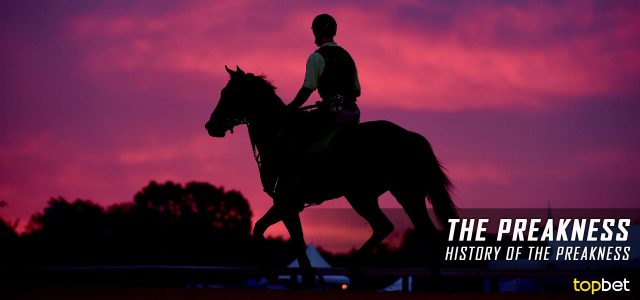You may be very excited for the Preakness Stakes especially with Nyquist’s sensational finish at the Kentucky Derby. Not many know of the Preakness’ long and illustrious history. Set yourself apart from the majority of viewers heading into the second jewel of the Triple Crown with our feature of the history of the Run for the Black-Eyed Susans below.
Find out where to watch the Preakness with our guide here. If you’re looking for a horse to bet on, check out our analyses of the top horses and jockeys heading into the Run for the Black-Eyed Susans.
Sports News and Predictions
- 2016 Belmont Stakes Stakes Experts Picks
- 2016 Belmont Stakes Horse and Jockey Analysis and Breakdown
- 2016 FedEx St. Jude Classic Predictions, Sleeper Picks, Odds, and Betting Preview
- 2016 Belmont Stakes Expert Picks and Predictions
History of the Preakness Stakes
Pimlico Race Course
The Pimlico Race Course is the home of the Preakness Stakes. It’s the second oldest track in the United States behind Saratoga. Pimlico first opened its doors on October 25, 1870 and has hosted a bevy of horseracing legends ever since. The legendary Man o’ War, Sir Barton, Seabiscuit, War Admiral, Citation, Secretariat and Cigar have all neighed and galloped at the historic Pimlico.
How was the concept of the Pimlico Race Course conceived? It all started in a dinner party proposition made by then Maryland Governor Oden Bowie and his friends. They were in Saratoga, New York agreed to race horses that were then just yearlings in two years’ time to commemorate the evening. Dinner would be on the winner. Saratoga and the American Jockey Club bid to host the event, but Bowie pledged that he’d build a model racetrack in the comfort of his home state—Baltimore. Pimlico was built.Birth of the Preakness Stakes
The first Preakness Stakes was held on May 27, 1873, drawing seven starters. Survivor, John Chamberlain’s three-year-old colt, collected tha $2,050 winning purse by galloping to victory by 10 lengths. The race was named in honor of the colt Preakness from Milton Holbrook Sanford’s Preakness Stables in Preakness, Wayne Township, New Jersey. Preakness won the Dinner Party Stakes the day Pimlico opened.
The Preakness was not officially part of the Triple Crown until the term’s inception in 1930. But it already hosted one of the best colts before the said year. Sir Barton was the first ever Triple Crown winner after sweeping the Kentucky Derby, Preakness and Belmont Stakes in 1919.
Inclusion in the Triple Crown Series
The Triple Crown term was first coined in 1930, but the order of the races wasn’t finalized until 1932. Prior to 1932, the Preakness was run before the Derby 11 times. On May 12, 1917, and again on May 13, 1922, the Preakness and the Derby were run on the same day making it impossible to crown a Triple Crown winner.
The order of the Triple Crown was set in 1932 and continues on until today. The Derby comes first, and then the Preakness is run on the third Saturday in May, two weeks after the Run for the Roses. The Belmont Stakes is run three weeks after the Preakness.
Records
Speed Record
Secretariat (1973) – 1 3/16 miles in 1:53
Margin of Victory
11 ½ lengths – Smarty Jones (2004)
10 lengths – Survivor (1873)
9 ¾ lengths – Funny Cide (2003)
Eight lengths – Count Fleet (1943)
Most Wins by a Jockey
Six – Eddie Arcaro (1941, 1948, 1950, 1951, 1955, 1957)
Five – Pat Day (1985, 1990, 1994, 1995, 1996)
Three – George Barbee (1873, 1876, 1883)
Three – Bill Hartack (1956, 1964, 1969)
Three – Lloyd Hughes (1875, 1879, 1880)
Three – Gary Stevens (1997, 2001, 2013)
Three – Victor Espinoza (2002, 2014, 2015)
Most Wins by a Trainer
Seven – R. Wyndham Walden (1875, 1878, 1879, 1880, 1881, 1882, 1888)
Six – D. Wayne Lukas (1980, 1985, 1994, 1995, 1999, 2013)
Six – Bob Baffert (1997, 1998, 2001, 2002, 2010, 2015)
*Baffert-trained horse Collected is +1,600 to win the 141st running of the Preakness Stakes
Five – Thomas J. Healey (1901, 1922, 1923, 1926, 1929)
Four – Jim Fitzsimmons (1930, 1935, 1955, 1957)
Four – Jimmy Jones (1947, 1948, 1956, 1958)
Three – John Whalen (1907, 1911, 1913)
Don’t miss out on this historic race. Create a betting account now and get in on one of horseracing’s longest standing events.










